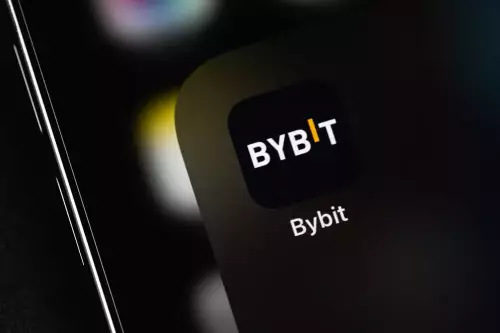 |
|
 |
|
 |
|
 |
|
 |
|
 |
|
 |
|
 |
|
 |
|
 |
|
 |
|
 |
|
 |
|
 |
|
 |
|
블록 체인 기술은 실제로 보이는 것보다 오래되었지만 그에 따른 블록 체인 플랫폼은 비교적 젊습니다. 그러한 현상과 마찬가지로, 그것은 갑자기 나타나고 독립적으로 진화합니다.

Blockchain technology has been around for longer than you might think, but the blockchain platforms based on it are relatively young. Like any such phenomenon, it emerges suddenly and evolves independently.
블록 체인 기술은 생각보다 오래 지속되어 왔지만 그에 따른 블록 체인 플랫폼은 비교적 젊습니다. 그러한 현상과 마찬가지로, 그것은 갑자기 나타나고 독립적으로 진화합니다.
This has created several related issues, namely the isolation of these platforms where each was developed with its vision, approach, and standards. Blockchain developers successfully work on filling this gap, but a lot of work is still ahead and there are several different approaches to blockchain network integration.
이로 인해 여러 관련 문제, 즉 비전, 접근 및 표준으로 각각이 개발 된 이러한 플랫폼의 분리가 발생했습니다. 블록 체인 개발자는 이러한 격차를 메우는 데 성공적으로 노력하지만 많은 작업이 여전히 진행 중이며 블록 체인 네트워크 통합에는 여러 가지 접근 방식이 있습니다.
Today we will look at what are the key challenges in achieving interoperability in blockchain technology. What are the advantages of blockchain interoperability? And what are the interoperable blockchain platforms that exist today?
오늘 우리는 블록 체인 기술의 상호 운용성을 달성하는 데있어 주요 과제가 무엇인지 살펴볼 것입니다. 블록 체인 상호 운용성의 장점은 무엇입니까? 그리고 오늘날 존재하는 상호 운용 가능한 블록 체인 플랫폼은 무엇입니까?
Challenges for Cross-Chain Communication
크로스 체인 커뮤니케이션에 대한 도전
As we mentioned earlier, because blockchain is an open technology, its implementation has been approached very differently without regard to the future popularity of other blockchain platforms and interoperability with them. This created many isolated blockchains that could not communicate with each other and made it difficult for Web3 to evolve in a coherent and uniform manner.
앞에서 언급했듯이 블록 체인은 개방형 기술이기 때문에 다른 블록 체인 플랫폼의 미래의 인기와 그들과의 상호 운용성에 관계없이 그 구현은 매우 다르게 접근했습니다. 이것은 서로 통신 할 수없는 많은 고립 된 블록 체인을 만들어 냈으며 Web3가 일관되고 균일 한 방식으로 진화하기가 어렵습니다.
Lack of Standardization
표준화 부족
The lack of an initial and unified standard or even established best practices for blockchain platform development and interoperability has created a problem of blockchain isolation. Everyone has developed their own vision, approaches, and standards making blockchain network integration technically impossible.
블록 체인 플랫폼 개발 및 상호 운용성을위한 초기 및 통합 표준 또는 심지어 모범 사례가 없기 때문에 블록 체인 격리 문제가 발생했습니다. 모든 사람은 자신의 비전, 접근 방식 및 표준을 개발하여 블록 체인 네트워크 통합을 기술적으로 불가능하게 만들었습니다.
Liquidity Fragmentation
유동성 파편화
In turn, this also created the problem that the native tokens of each blockchain could not be natively integrated into the other. The lack of ability to seamlessly flow capital as a very basic problem severely stalled the development of Web3 as an industry.
결과적으로, 이것은 또한 각 블록 체인의 기본 토큰을 기본적으로 다른 블록 체인에 통합 할 수 없다는 문제를 일으켰습니다. 매우 기본적인 문제로 자본을 원활하게 흐르는 능력 부족으로 인해 Web3의 업계 개발이 심각하게 중단되었습니다.
Scalability Constraints
확장 성 제약
Also, isolated blockchains can experience network overload and the inability to delegate processing. It can create many challenges such as network slowdowns, rising costs, and security issues that ultimately negatively impact scalability.
또한 분리 된 블록 체인은 네트워크 과부하와 처리를 위임 할 수없는 것을 경험할 수 있습니다. 네트워크 둔화, 비용 상승 및 궁극적으로 확장성에 부정적인 영향을 미치는 보안 문제와 같은 많은 과제를 일으킬 수 있습니다.
Security Risks
보안 위험
Of course, blockchain security has also suffered from isolation. Finding a vulnerability in the protocol could result in all its assets risking being stolen or frozen without the ability to move them to another secure blockchain until the problem is resolved.
물론 블록 체인 보안도 격리로 어려움을 겪었습니다. 프로토콜에서 취약성을 찾으면 문제가 해결 될 때까지 다른 보안 블록 체인으로 이동할 수있는 능력없이 모든 자산이 도난 당하거나 얼어 붙을 위험이 있습니다.
Achieving Blockchain Interoperability
블록 체인 상호 운용성 달성
When the development of this became inevitable, and the capital invested in it became impossible to ignore – it became obvious that each individual platform, as well as the whole Web3 industry, required solutions that could bring blockchain interoperability benefits. And to solve this there were several views, each with its features.
이것의 발전이 불가피 해졌고, 자본에 투자 한 자본이 무시할 수 없었을 때 - 각 개별 플랫폼과 전체 Web3 산업이 블록 체인 상호 운용성 혜택을 가져올 수있는 솔루션이 필요하다는 것이 분명해졌습니다. 그리고 이것을 해결하기 위해 각각의 기능이있는 몇 가지 견해가있었습니다.
Blockchain Bridges
블록 체인 다리
Centralized and decentralized blockchain bridges are separate, complementary solutions that work in conjunction with the main blockchains and help enable data exchange between them. Examples include Wrapped Bitcoin (WBTC), which allows Bitcoin to be used in the Ethereum ecosystem by locking it to a centralized custodian and issuing the equivalent amount of WBTC on the Ethereum network as an ERC-20 token. It is also an Avalanche Bridge (AB), which allows the transfer of Avalanche and Ethereum tokens using trusted relayers, while significantly increasing speed and reducing cost.
중앙 집중식 및 분산 블록 체인 브리지는 메인 블록 체인과 함께 작동하며 이들 사이의 데이터 교환을 가능하게하는 별도의 보완 솔루션입니다. 예를 들어 래핑 된 비트 코인 (WBTC)은 중앙 집중식 관리인에 고정하고 ERC-20 토큰으로 이더 리움 네트워크에서 동등한 양의 WBTC를 발행하여 이더 리움 생태계에서 비트 코인을 사용할 수 있도록합니다. 또한 AB (Avalanche Bridge)로, 신뢰할 수있는 릴레이를 사용하여 눈사태 및 이더 리움 토큰을 전달하고 속도를 크게 높이고 비용을 절감 할 수 있습니다.
The problem with centralized bridges is their vulnerability, namely a potential single point of failure, which in turn has given rise to decentralized bridges. The most prominent example is Wormhole, a decentralized blockchain bridge that connects Ethereum, Solana, and BNB Chain. But it doesn’t guarantee security either, and in particular, it was hacked in 2022.
중앙 집중식 다리의 문제는 취약성, 즉 잠재적 인 단일 고장 지점으로, 결과적으로 분산 된 다리를 일으켰습니다. 가장 두드러진 예는 Ethereum, Solana 및 BNB 체인을 연결하는 분산 된 블록 체인 브리지 인 Wormhole입니다. 그러나 보안을 보장하지는 않으며 특히 2022 년에 해킹되었습니다.
Layer Zero & Interoperability Protocols
레이어 제로 및 상호 운용성 프로토콜
There is also a more fundamental approach to solving the problem, namely seeking to provide a means not for interoperability between specific blockchains, but a foundation for interoperability between all. Of course, here there are several visions of how to approach and implement this too. Some have focused on developing a so-called Layer 0 blockchain as the underlying infrastructure for Layer 1 blockchains like Bitcoin, Ethereum, etc. Others instead of Layer 0 focused on developing decentralized middleware and interoperability protocol as such.
또한 문제를 해결하기위한보다 근본적인 접근법이 있습니다. 즉, 특정 블록 체인 사이의 상호 운용성이 아니라 모든 사람 간의 상호 운용성을위한 기초를 제공하려고합니다. 물론 여기에는 이에 접근하고 구현하는 방법에 대한 몇 가지 비전이 있습니다. 일부는 소위 레이어 0 블록 체인을 비트 코인, 이더 리움 등과 같은 계층 1 블록 체인의 기본 인프라로 개발하는 데 중점을 두었습니다.
IBC (Inter-Blockchain Communication)
IBC (블록 체인 간 커뮤니케이션)
IBC is a cross-chain interoperability protocol that runs on top of Cosmos’ Layer 0 infrastructure and uses light clients and Merkle proofs to verify the state of the chains to ensure safe and reliable data transfer between independent blockchains. In turn, Tendermint’s consensus mechanism ensures transaction completeness within individual Cosmos chains, which connect into Cosmos Hub and implement their proprietary Hub-and-Spoke Model. This is a decentralized security model where each chain is responsible for its security while maintaining interoperability with each other. IBC can use this Layer 0 infrastructure for more efficient functioning, but it also supports direct interoperability between blockchains without Tendermint and Cosmos Hub.
IBC는 Cosmos의 레이어 0 인프라 위에 실행되는 크로스 체인 상호 운용성 프로토콜로, 경사의 상태를 검증하여 독립적 인 블록 체인 사이의 안전하고 신뢰할 수있는 데이터 전송을 보장하기 위해 가벼운 클라이언트 및 머클 증명을 사용합니다. 결과적으로, Tendermint의 합의 메커니즘은 개별 코스모스 체인 내의 거래 완전성을 보장하여 Cosmos 허브에 연결되어 독점 허브 및 스포크 모델을 구현합니다. 이것은 각 체인이 서로의 상호 운용성을 유지하면서 보안을 담당하는 분산 보안 모델입니다. IBC는보다 효율적인 기능을 위해이 레이어 0 인프라를 사용할 수 있지만 Tendermint 및 Cosmos 허브가없는 블록 체인 간의 직접적인 상호 운용성을 지원합니다.
Cross-Consensus Messaging (XCM)
크로스 컨센서스 메시징 (XCM)
XCM is another cross-chain interoperability protocol, but now from Polkadot, that communicates between parachains within Polkadot Layer 0 called Relay Chain, the general architecture of which we have described here.
XCM은 또 다른 크로스 체인 상호 운용성 프로토콜이지만 현재 Polkadot에서 나온 것은 릴레이 체인 (릴레이 체인)이라는 폴카 도트 층 0 내의 낙하산 사이에서 통신합니다.
Although XCM can exchange data directly between parachains, full functionality is achieved through the Relay Chain which coordinates interactions and also implements shared security for the entire Polkadot ecosystem using Polkadot Validators and nominated Proof-of-Stake (NPoS) consensus. As you may have noticed this is different from the decentralized security approach of Cosmos, which has its
XCM은 낙하산 사이에서 데이터를 직접 교환 할 수 있지만, 상호 작용을 조정하고 Polkadot Validators 및 지명 된 스테이크 (NPO) 합의를 사용하여 전체 Polkadot 생태계에 대한 공유 보안을 구현하는 릴레이 체인을 통해 전체 기능이 달성됩니다. 당신이 알다시피, 이것은 코스모스의 분산 된 보안 접근법과 다르다는 것을 알았습니다.
부인 성명:info@kdj.com
제공된 정보는 거래 조언이 아닙니다. kdj.com은 이 기사에 제공된 정보를 기반으로 이루어진 투자에 대해 어떠한 책임도 지지 않습니다. 암호화폐는 변동성이 매우 높으므로 철저한 조사 후 신중하게 투자하는 것이 좋습니다!
본 웹사이트에 사용된 내용이 귀하의 저작권을 침해한다고 판단되는 경우, 즉시 당사(info@kdj.com)로 연락주시면 즉시 삭제하도록 하겠습니다.






























































